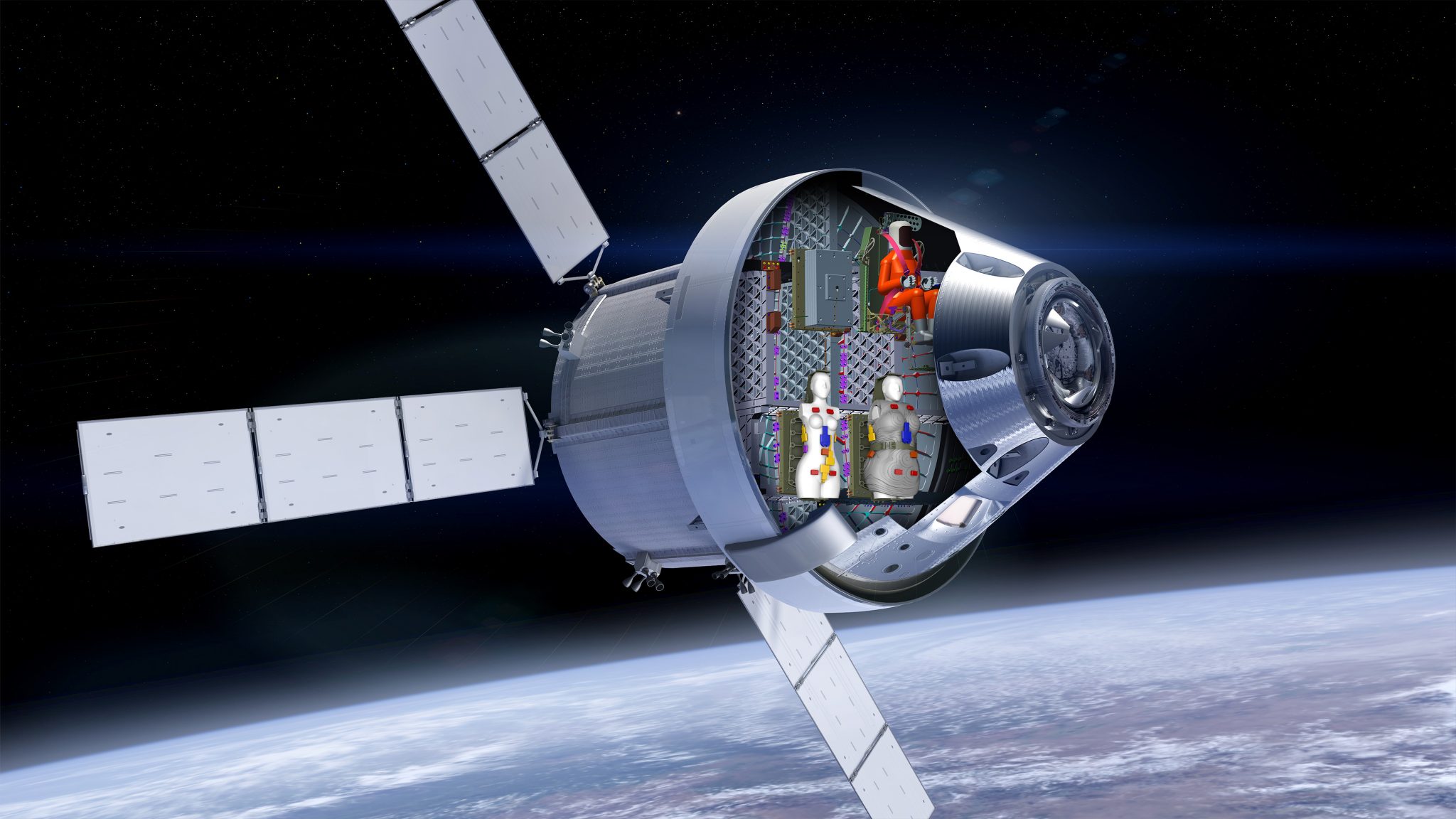A motley crew of mannequins and biological experiments will take a deep-space journey further than any human has been before. The simulated astronauts and various experiments will ride aboard Artemis 1 , an uncrewed test flight of NASA's Space Launch System (SLS) megarocket and Orion spacecraft , following a launch no earlier than Aug. 29.
The system will explore the radiation environment near Earth and the moon , including flying in deeper space than the Apollo missions, for more than a month. Moving outside the protective Van Allen radiation belts near Earth that shield the International Space Station astronauts from cosmic rays will cause an increased risk for future crew members that venture out for lunar missions, scientists said in a livestreamed NASA briefing Wednesday (Aug. 17).
Related: NASA's Artemis 1 moon mission: Live updates More: NASA's Artemis 1 moon mission explained in photos "Understanding this [risk] is very important for successful and sustainable space exploration efforts in deep space," said Ramona Gaza of NASA's Johnson Space Center in the briefing. Gaza is lead of the Matroshka AstroRad Radiation Experiment (MARE) science team, which also includes investigators from DLR (the German space agency). MARE will fly two mannequin torsos (or phantoms) called Helga and Zohar to space fitted with 5,600 sensors to measure radiation; of the two, only Zohar will wear an AstroRad radiation protection vest.
The two "crew members" will be joined by a " moonikin " named after Apollo 13 engineer Arturo Campos. Along with picking up information on acceleration and vibration, Campos has two radiation sensors to see the accumulated exposure a moon mission will bring. Besides the humanoids, yeast cells will fly on board Artemis 1 to see how living things react to radiation.
The BioSentinel cubesat will fly a biology experiment beyond the Earth-moon system for the first time, assessing how yeast cells are affected by space radiation . "We hope that we can extrapolate our resource to human biology and inform potential countermeasures for future missions," lead scientist Sergio Santa Maria, of NASA's Ames Research Center, said of BioSentinel. — NASA's Artemis program of lunar exploration — Artemis 1: Going back to the moon — For Artemis moon missions, science will reign supreme Protecting astronauts also comes down to an assessment of the radiation environment.
Scientists will continue to study the sun 's emissions using another cubesat called CubeSat to Study Solar Particles (CuSP). The mission will examine the particles and magnetic fields coming from the sun, also known as the solar wind . The solar wind not only has relevance to human health in space, but also on Earth ; that's because large space weather events like coronal mass ejections can affect power lines, satellites and other infrastructure vital to human functioning on our planet.
CuSP will be an experiment ahead of possible plans to put fleets of cubesats into deep space to look at solar radiation from multiple angles, said Mihir Desai, CuSP principal investigator at the Southwest Research Institute. "It will be, in some sense, a forerunner or pathfinder to a potential constellation of low-cost cubesats that can make measurements in a very cost-effective fashion," he said. Follow Elizabeth Howell on Twitter @howellspace (opens in new tab) .
Follow us on Twitter @Spacedotcom (opens in new tab) or Facebook. .

